
Ludwig Redtenbacher was an Austrian doctor and entomologist mainly interested in beetles.

Vincenz Kollar was an Austrian entomologist who specialised in Diptera. He was especially concerned with species of economic interest, particularly those of forests. Kollar described many new species. He was Curator of the Natural History Museum in Vienna. He worked mainly on insects collected on expeditions, especially that from the Austrian Brazil Expedition of 1817–1835.
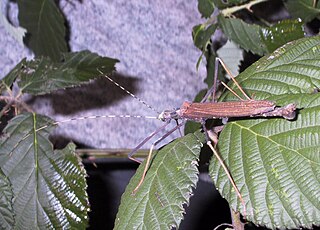
Pseudophasmatidae is a family of stick insect, in the suborder Verophasmatodea, commonly called the "striped walkingsticks". An important identifying characteristic is its mesothorax, which is never more than three times as long as the prothorax.

Melyridae are a family of beetles of the superfamily Cleroidea.
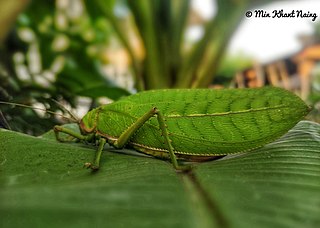
The subfamily Pseudophyllinae contains numerous species in the family Tettigoniidae, the katydids or bush crickets. Sometimes called "true katydids", together with the crickets of suborder Ensifera, they form part of the insect order Orthoptera which also contains grasshoppers.
Prospalta is a genus of moths of the family Noctuidae. The genus was erected by Francis Walker in 1858.
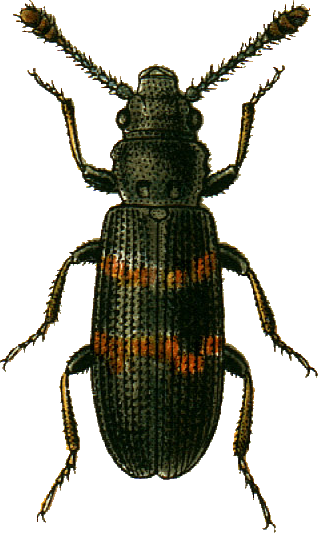
Phloeostichidae is a family of beetles in the superfamily Cucujoidea. They are typically found under the bark of dead trees. Larvae have been found to consume plant tissue and some fungi, while the adults appear to be exclusively fungivores. The family contains four extant genera, Phloeostichus is native to the Palearctic, Rhopalobrachium is native to central-southern South America and eastern Australia, Hymaea is native to southeastern Australia, and Bunyastichus is found in Tasmania.

Scirtidae is a family of beetles (Coleoptera). These beetles are commonly referred to as marsh beetles, as the larvae are typically associated with stagnant water, but can be found in flowing water. Adults prefer decomposing plant material near the water's edge. More than an estimated 600 species are known worldwide, distributed among at least 60 genera.

Lamiini is a tribe of longhorn beetles of the subfamily Lamiinae.
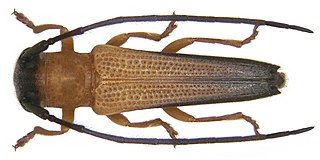
Nupserha is a genus of longhorn beetles of the subfamily Lamiinae, containing the following species:

Phytoecia is a genus of longhorn beetles of the subfamily Lamiinae,
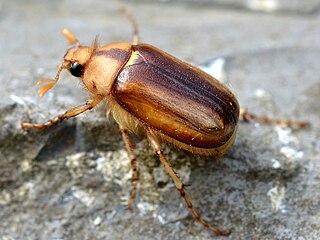
Rhizotrogus is a genus of scarab beetles in the subfamily Melolonthinae.
Nupserha apicata is a species of beetle in the family Cerambycidae. It was described by Léon Fairmaire in 1891.
Nupserha bidentata is a species of beetle in the family Cerambycidae. It was described by Johan Christian Fabricius in 1792, originally under the genus Saperda.

Nupserha vitticollis is a species of beetle in the family Cerambycidae. It was described by Hermann Julius Kolbe in 1893. It is known from Tanzania, the Democratic Republic of the Congo, Cameroon, Uganda, and Togo.
Nupserha vexator is a species of beetle in the family Cerambycidae. It was described by Francis Polkinghorne Pascoe in 1858. It is known from Sri Lanka.

Euploea redtenbacheri, the Malayan crow or Redtenbacher's crow is a butterfly in the family Nymphalidae. It was described by Cajetan Felder and Rudolf Felder in 1865. It is found in the Indomalayan realm and the Australasian realm.
Elasmosoma is a genus of insects belonging to the family Braconidae.
Perissops ocellatus is a weevil in the Curculionidae family, found on the east coast of Australia in New South Wales and Queensland.












